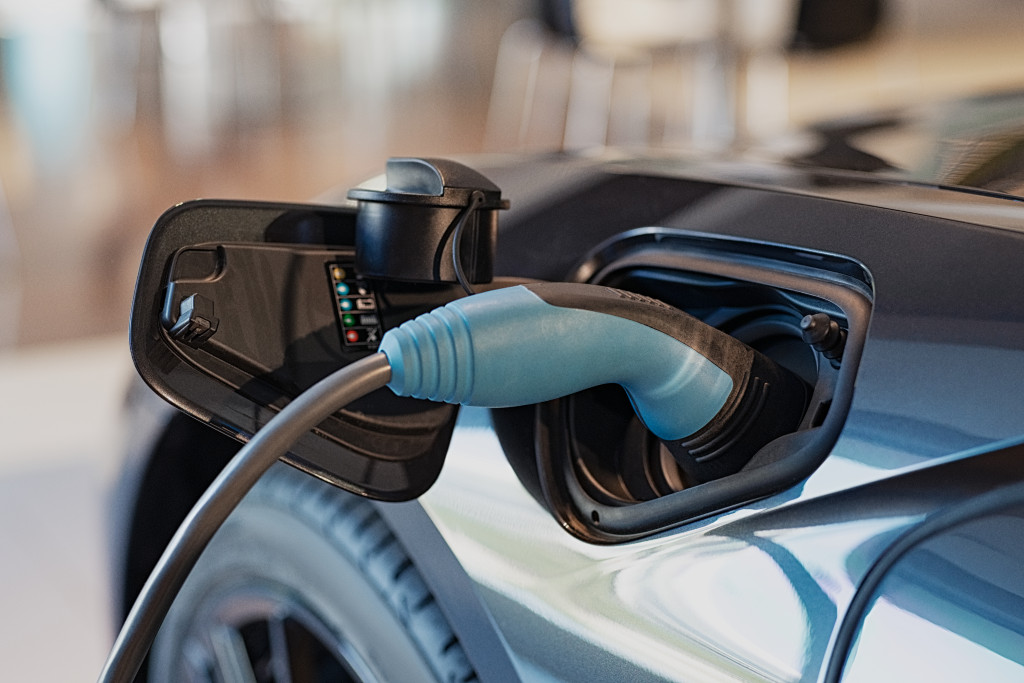- EVs are becoming increasingly popular due to affordability and ease of charging.
- Autonomous vehicles use sensors, cameras, radar systems and algorithms to operate without human intervention.
- VaaS offers convenience and affordability over car ownership.
- Communicative cars utilize technology for improved safety on the roads.
- Big data analytics provides predictive insights for better servicing and customer experiences.
The automotive industry is rapidly evolving and advancing with technological trends. Today, some cars can drive themselves, communicate, and even be rented as a service. With all these new advancements, it’s easy to see why the automotive industry is experiencing a significant transformation. Go over five of the biggest technological trends in the automotive industry today.
1. Electric Vehicles (EVs)
As electric vehicles become more affordable and easier to charge, they are becoming increasingly popular amongst consumers. EVs offer several advantages over traditional gas-powered vehicles; they don’t require frequent trips to the gas station and emit fewer pollutants into the environment. Additionally, EVs often have advanced safety features and typically perform better acceleration than their counterparts. As EV batteries continue to improve, expect more people to switch to electric vehicles soon.
Power sources
Electric vehicles can either be powered by battery or fuel cell technology. Batteries typically have a longer range and are more affordable, while fuel cells offer greater power output and efficiency. Both technologies are used in today’s vehicles, with some combining the two to maximize performance. Some companies also offer solar-powered cars that convert sunlight into electricity to power the vehicle.
2. Autonomous Vehicles

Autonomous vehicles use sensors, cameras, radar systems, lidar systems, and artificial intelligence algorithms, among other technologies, to enable them to operate without human input or driver input — allowing for completely hands-off driving experiences. While there are still some regulatory hurdles before autonomous vehicles become mainstream — such as ensuring that these cars can safely operate on public roads — this trend will likely stay as companies like Tesla continue pushing forward with their self-driving vehicle initiatives.
Increased accessibility
One of the most significant benefits of autonomous vehicles is increased accessibility for those with difficulty driving, such as the elderly or disabled. With AI-driven cars, these individuals can get around without needing a driver. This is also incredibly beneficial for those who may still be able to drive but require assistance due to physical or mental disabilities.
3. Vehicles-as-a-Service (SaaS)
Vehicles-as-a-Service (VaaS) or Mobility-as-a-Service is a car ownership model in which customers pay for access to a vehicle instead of owning it outright. This type of service has been growing in popularity due to its convenience and affordability; customers don’t need to worry about insurance or maintenance costs and can access cars on short notice without any long-term commitment or financial burden. Companies such as Uber, Lyft, Zipcar, and Car2Go offer VaaS services in many cities worldwide.
Improved mobility
VaaS also helps improve mobility for those without access to a vehicle — or those who don’t want the financial burden of owning one. It also provides more economical options for people needing a car temporarily. This is especially helpful in urban areas where parking can be scarce, and public transportation might not reach specific destinations.
Less congestion and vehicle emissions
By offering VaaS, the automotive industry can also reduce vehicle congestion and emissions. Since customers only pay for what they need, there’s less incentive to own an additional car. Additionally, VaaS services typically allow cars to be shared more efficiently between multiple users — resulting in fewer vehicles on the road and a reduced carbon footprint.
4. Communicative Cars

While most modern cars already come equipped with communication technology (e.g., Bluetooth), automakers are now taking things one step further by developing cars that can communicate with each other directly via sensors and onboard computers. This technology has been shown to reduce accidents by up to 40%, making driving safer and smoother for road drivers today.
In addition, communication between cars will enable them to share data about traffic conditions, eventually leading to self-driving vehicles that can navigate traffic jams without human intervention. Automotive connective technology also connects cars with other services such as parking, maintenance, and navigation.
5. Big Data Analytics
Big data analytics refers to collecting data from various sources (sensors and cameras) within a car and using machine learning algorithms and artificial intelligence techniques in order to process and analyze this data to make predictions about how a car should behave under certain conditions or situations. For example, big data analytics could help identify problems before they become serious and even predict when a car may need servicing or repairs.
Data analytics are also being used in the automotive industry to improve record-keeping, safety protocols and customer experiences. Developing innovative apps for car detailing helps customers book service sessions, receive notifications on maintenance, and even book appointments with mechanics. By using these apps, customers can make informed decisions about their vehicles and receive personalized services from automotive companies.
In Closing
The automotive industry is rapidly evolving due to new technological advances. From electric cars to self-driving vehicles, the trends today are paving the way for a future where cars can communicate and drive themselves without any human input. All these technological advancements are helping the automotive industry transform into a cutting-edge sector that offers more convenience, safety, and efficiency than ever before. Automakers adopting new technologies can offer better customer service while reducing environmental impact.







